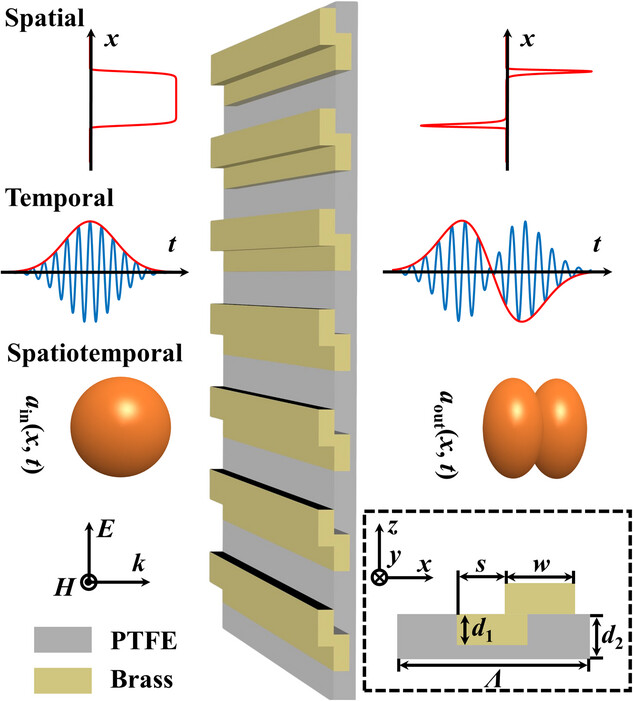Abstract: Professor Ma Yungui's research group at Zhejiang University has implemented a spatial-time domain simulation differentiator based on an asymmetric metal grating metasurface. By using the unidirectional excitation of spoof surface plasmon polaritons (SSPPs), the device transfer function is close to the requirement of the first differential of the ideal space time domain. The spatial-temporal differential functions of the differentiator are verified both theoretically and experimentally, and it can be used to generate spatial-temporal pulses carrying transverse orbital angular momentum (OAM).
Key words: Laser & Photonics Reviews, optical calculation, Spatiotemporal differentiation, edge detection, transverse orbital angular momentum

Spatiotemporal optical computing devices that can perform mathematical operations in both spatial and temporal domains can provide unprecedented measures to build efficient and real-time information processing systems. It is particularly important to realize the comprehensive functions in a compact design for better integration with electronic components. At present, the relevant research work of electromagnetic metasurface based Spatiotemporal analog computing devices is mainly based on theoretical exploration. Recently, the research group of Professor Ma Yungui from Zhejiang University experimentally demonstrated an analog spatiotemporal differentiator base on asymmetric grating-type metasurface, as shown in Figure (a). The first order differentiation of spatial domain, time domain and Spatiotemporal signals are realized by using unidirectional excitation of SSPPs in asymmetric double-layer metal gratings. The experimental results show that the transfer function of the device near the resonant frequency meets the requirement of the first differential in the space time domain. One of the important application directions of spatial simulation differentiation is edge detection, which can be widely used in machine vision, automatic driving and signal processing. Near the operating frequency of 11.28 GHz, the device achieves spatial edge detection of metal slits with a width of about 150 mm, as shown in Figure (b). Even for complex space-time input pulses, such as the Zhejiang University emblem shown in Figure (d), the differentiator can still detect its space-time edge. The generation of spatiotemporal optical vortices (STOVs) with transverse OAM using metasurface based spatiotemporal optical vortices (STOVs) is a new research direction in recent years. The structure of STOVS is much more compact than that of traditional pulse converters equipped with Fourier transform elements. Through numerical simulation, the authors demonstrate that the spatiotemporal differentiator can not only generate a single rectangular pulse input, but also generate a spatiotemporal pulse with a fractional topological charge (l = 0.58). Thanks to its extraordinary integration capabilities, low power consumption and natural parallel processing capabilities, the spatiotemporal differentiator is expected to be widely used in the Internet of Things, electromagnetic imaging, quantum communication and other fields.
The above research work is published in Laser & Photonics Reviews under the title "Electromagnetic Spatiotemporal Differentiation Meta-Devices" (DOI: 10.1002/ lPO.202300182). The first author is Zhou Yi, a postdoctoral fellow at Zhejiang University, and the corresponding author is Ma Yungui, a professor at Zhejiang University.






